It looks like you're using an Ad Blocker.
Please white-list or disable AboveTopSecret.com in your ad-blocking tool.
Thank you.
Some features of ATS will be disabled while you continue to use an ad-blocker.
12
share:
“f/8 and be there”
The above phrase, which has now become commonly known in the field, is attributed to Weegee, an entrepreneurial and pioneering photographer who became known for his gritty and dark images, for beating authorities to crime scenes, and for rushing the film to the press in order to break the news.

self portrait of Weegee, or Ascher Fellig
When asked about his start, he said, “In my particular case I didn't wait 'til somebody gave me a job or something, I went and created a job for myself—freelance photographer. And what I did, anybody else can do. What I did simply was this: I went down to Manhattan Police Headquarters and for two years I worked without a police card or any kind of credentials. When a story came over a police teletype, I would go to it. The idea was I sold the pictures to the newspapers. And naturally, I picked a story that meant something.” (Wikipedia--cited below)
en.wikipedia.org...
Weegee became the first civilian to obtain permission to install a police radio, which he did in 1938, and which enabled him to gain his reputation as having an uncanny aptitude for arriving at the scenes of crimes or tragedies before the blood had cooled, so to speak. His nickname Weegee most likely came from this characteristic. His ability to dish up breaking news earned him a spot in many publications, including the “ Herald Tribune, World-Telegram, Daily News, New York Post, New York Journal American, and Sun” (Wikipedia).
Below is a thumbnail of a few of his tragic images (is it disrespectful to the dead and mourning to take photographs? I definitely think so! I hate to perpetuate our voyeuristic tendencies by posting this but maybe getting a discussion going on the subject is what I’m hoping for)


Speaking of voyeurism, Weegee managed to capture shots of that as well:
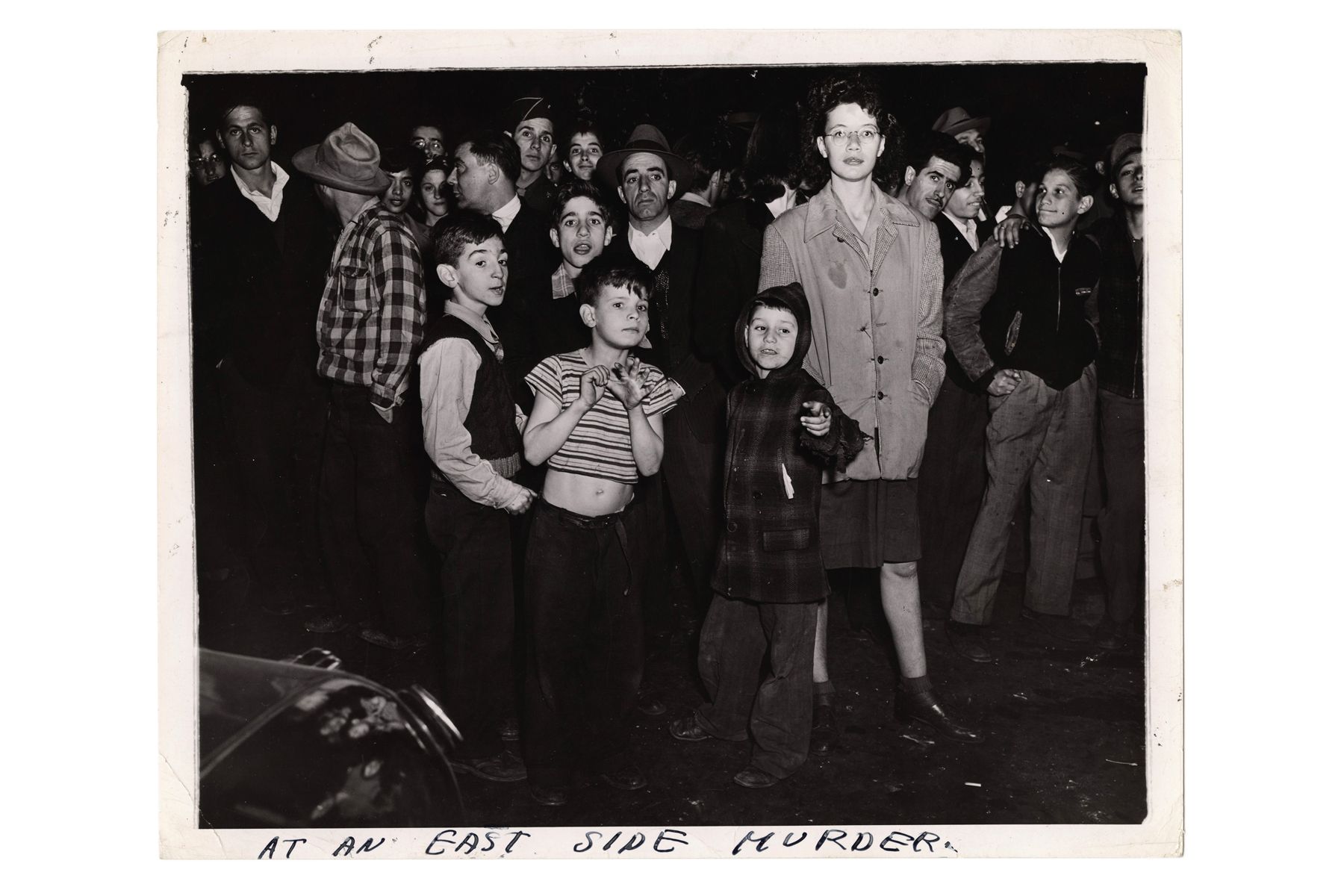
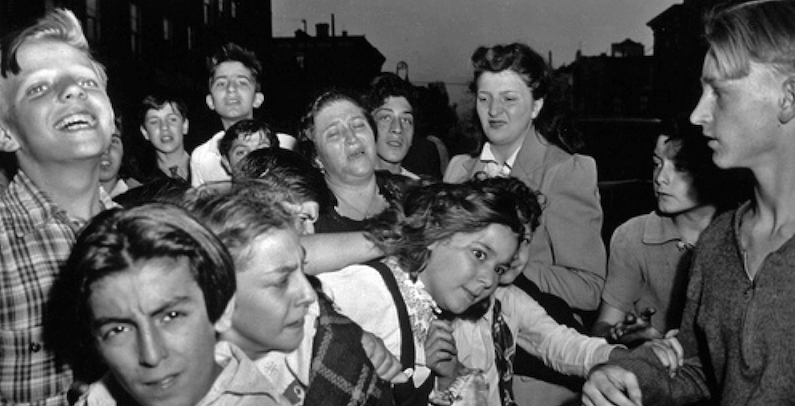
“ Nudists, circus performers, freaks and street people” (Wikipedia)
On top of crime scene photographs, Weegee captured lots of gritty imagery from the streets of New York. He had a penchant for capturing the outcasts and freaks, the non conformists who flouted social norms. Here are some samples of his extensive work. Each one tells a story.
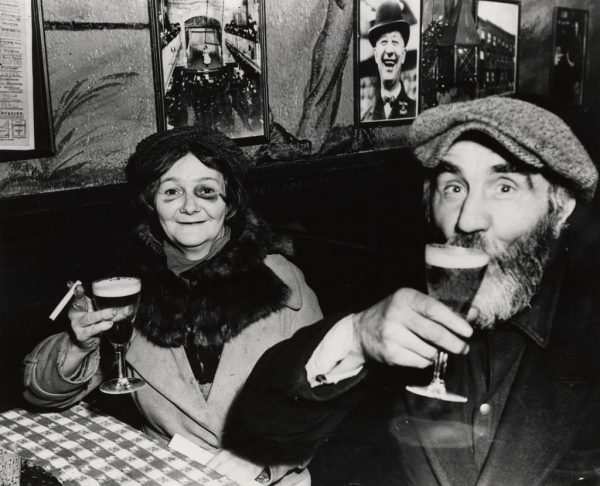
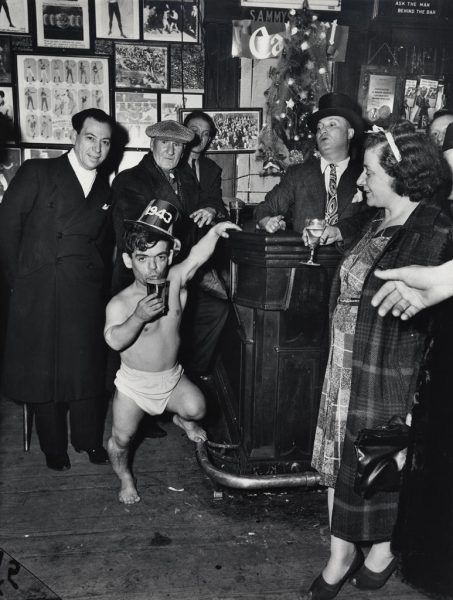
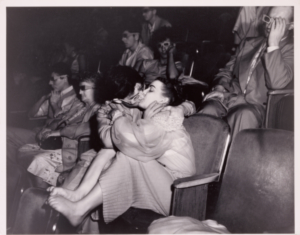
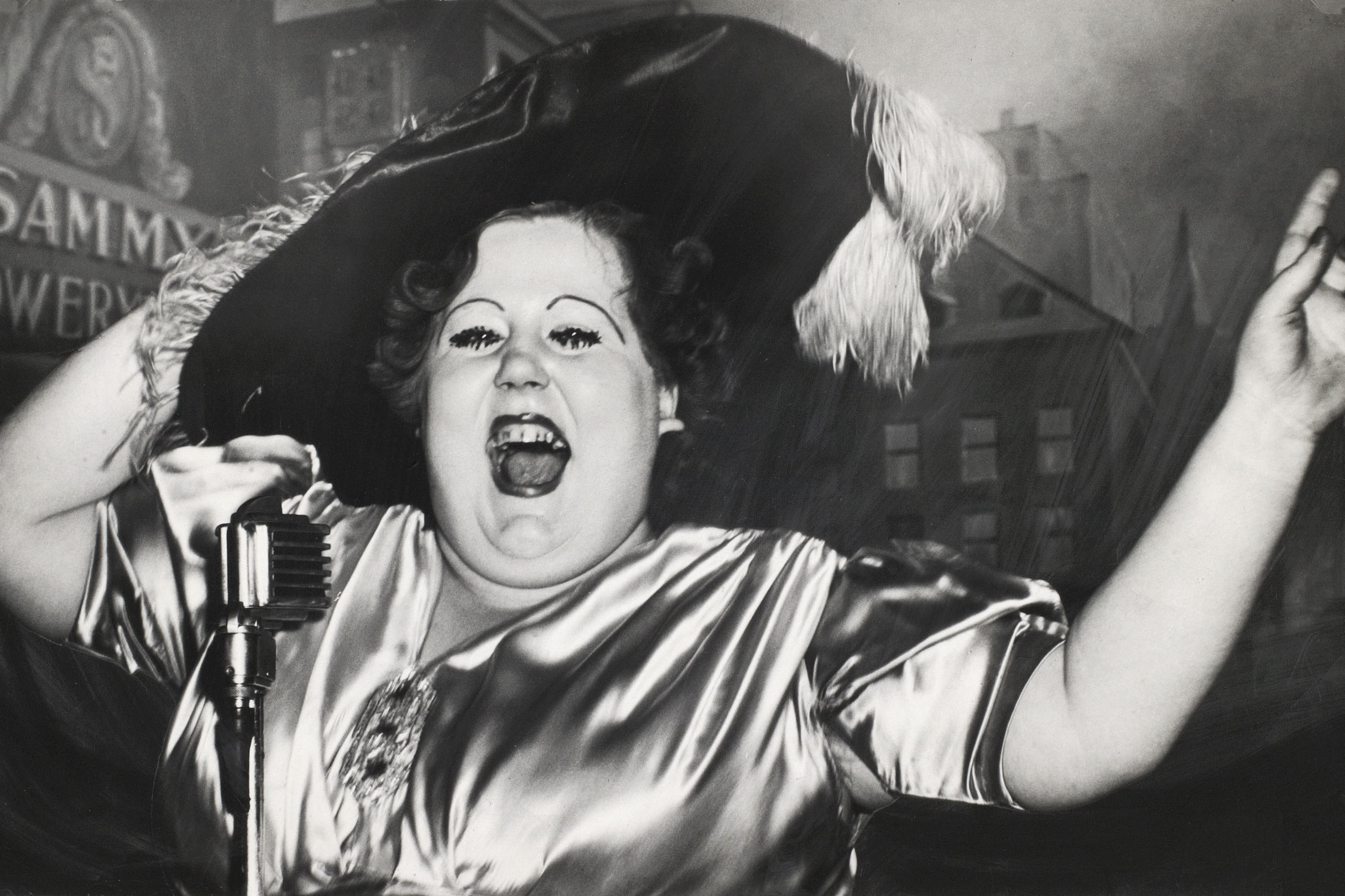

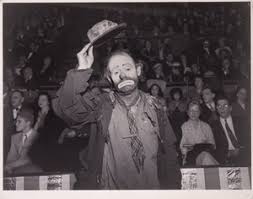
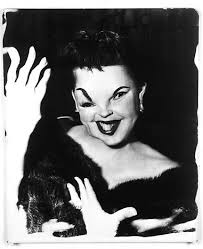
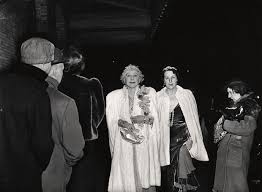
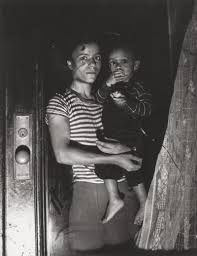
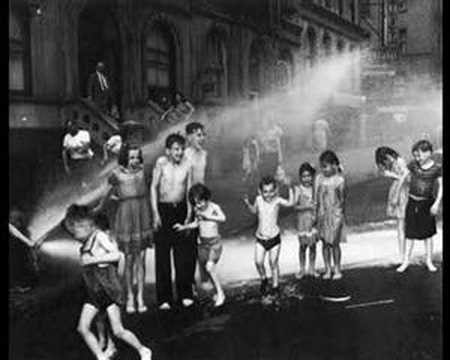
In my opinion the idea of pulling out a camera and capturing intimate and/or “private” moments is rather abhorrent-- and I am embarrassed for, and horrified by, the people I see with cell phones out filming a person who is injured or suffering injury rather than doing something to help. The idea of photographers flashing cameras in the face of those grieving the dead also bothers me, but I have to admit that the images of human grief captured are often striking and probably serve their purpose as well.
The Black Mirror episode “White Bear” presents this concept so well… anyone seen this episode? I’ll include part of the synopsis here:
en.wikipedia.org...(Black_Mirror)
Perhaps my favorite work of Weegee's wasn't his photography, although it still was in film. Weegee collaborated with Stanley Kubrick on the masterpiece Dr Strangelove as a special effects consultant and stills photographer. It is said that his accent partly inspired Peter Seller's affect in the film. That alone would be an amazing legacy!
Thanks for checking out the thread, my friends! Hope you are enjoying the remainder of your week and have a great weekend. I’m looking forward to hearing your thoughts on the subject!
The above phrase, which has now become commonly known in the field, is attributed to Weegee, an entrepreneurial and pioneering photographer who became known for his gritty and dark images, for beating authorities to crime scenes, and for rushing the film to the press in order to break the news.

self portrait of Weegee, or Ascher Fellig
When asked about his start, he said, “In my particular case I didn't wait 'til somebody gave me a job or something, I went and created a job for myself—freelance photographer. And what I did, anybody else can do. What I did simply was this: I went down to Manhattan Police Headquarters and for two years I worked without a police card or any kind of credentials. When a story came over a police teletype, I would go to it. The idea was I sold the pictures to the newspapers. And naturally, I picked a story that meant something.” (Wikipedia--cited below)
en.wikipedia.org...
Weegee became the first civilian to obtain permission to install a police radio, which he did in 1938, and which enabled him to gain his reputation as having an uncanny aptitude for arriving at the scenes of crimes or tragedies before the blood had cooled, so to speak. His nickname Weegee most likely came from this characteristic. His ability to dish up breaking news earned him a spot in many publications, including the “ Herald Tribune, World-Telegram, Daily News, New York Post, New York Journal American, and Sun” (Wikipedia).
Below is a thumbnail of a few of his tragic images (is it disrespectful to the dead and mourning to take photographs? I definitely think so! I hate to perpetuate our voyeuristic tendencies by posting this but maybe getting a discussion going on the subject is what I’m hoping for)


Speaking of voyeurism, Weegee managed to capture shots of that as well:


“ Nudists, circus performers, freaks and street people” (Wikipedia)
On top of crime scene photographs, Weegee captured lots of gritty imagery from the streets of New York. He had a penchant for capturing the outcasts and freaks, the non conformists who flouted social norms. Here are some samples of his extensive work. Each one tells a story.










In my opinion the idea of pulling out a camera and capturing intimate and/or “private” moments is rather abhorrent-- and I am embarrassed for, and horrified by, the people I see with cell phones out filming a person who is injured or suffering injury rather than doing something to help. The idea of photographers flashing cameras in the face of those grieving the dead also bothers me, but I have to admit that the images of human grief captured are often striking and probably serve their purpose as well.
The Black Mirror episode “White Bear” presents this concept so well… anyone seen this episode? I’ll include part of the synopsis here:
Liptak said it portrays people as victims of technology,[24] while Joyner commented it denotes that "the way in which we are spoon-fed an almost constant stream of information through technology has turned us into passive consumers".[2] Joyner believes that Brooker implicates the viewer with the story's credits scene, noting "we're the ones with the smartphones, passively absorbing abuses to human rights and decency, and yet revelling in the image from the safety of the screen".[2] Jeffery and Parker affirmed it contains the idea that people are preferring to document life rather than living it, as exemplified by "people who see violence break out ... and decide to film it rather than intervene."[11][14] Leigh Alexander of Boing Boing said the episode reflects how violence is easily accessed on the Internet and quickly arouses people's attention. She noted, "you can view the episode as a critique of all kinds of themes: Mob mentality, reality television, even the complicated treatment of women in the justice system ... Primarily, though, this episode is a critique of our deep, often-unexamined mass desensitisation, or at least a dread portent of its potential to grow. It aims to ask: To what extent can you stand by and watch horror before you are complicit, punishable?"[26]
en.wikipedia.org...(Black_Mirror)
Perhaps my favorite work of Weegee's wasn't his photography, although it still was in film. Weegee collaborated with Stanley Kubrick on the masterpiece Dr Strangelove as a special effects consultant and stills photographer. It is said that his accent partly inspired Peter Seller's affect in the film. That alone would be an amazing legacy!
Thanks for checking out the thread, my friends! Hope you are enjoying the remainder of your week and have a great weekend. I’m looking forward to hearing your thoughts on the subject!
edit on 29-11-2019 by zosimov because: (no reason given)
In X-files episode "Tithonus", photographer Alfred Fellig arouses the suspicion of the NYPD when he repeatedly arrives at crime scenes before
the police. I always assumed it was just another fantastic Monster-of-the-Week episode but I think we can safely attribute the inspiration to your man
Weegee.
a reply to: DictionaryOfExcuses
Oh cool, I haven't seen this episode! Yes, you're right-- I think that it's is a safe to make the association
I'll have to hunt that episode down and watch it.
Hope you're having a good one DoE!
Oh cool, I haven't seen this episode! Yes, you're right-- I think that it's is a safe to make the association
I'll have to hunt that episode down and watch it.
Hope you're having a good one DoE!
a reply to: zosimov
Weegee was one of the greats of his time. If it weren't for people like Weegee, Lewis Hine, Vivian Maier, Garry Winogrand, and too many others to name, we would be a lot more ignorant of the past and the human condition throughout the last 150+ years. We may find the intrusion "abhorrent" at the time, but we're glad to have those photos later.
I do agree there's a time to put down the camera and help rather than capture the moment.
ETA: I don't know if you are into photography like me, or if you just found Weegee's story interesting, but you might also find Lewis Hine and Dorothea Lange interesting once you know their back stories and why they took the pictures they did.
Weegee was one of the greats of his time. If it weren't for people like Weegee, Lewis Hine, Vivian Maier, Garry Winogrand, and too many others to name, we would be a lot more ignorant of the past and the human condition throughout the last 150+ years. We may find the intrusion "abhorrent" at the time, but we're glad to have those photos later.
I do agree there's a time to put down the camera and help rather than capture the moment.
ETA: I don't know if you are into photography like me, or if you just found Weegee's story interesting, but you might also find Lewis Hine and Dorothea Lange interesting once you know their back stories and why they took the pictures they did.
edit on 11/29/2019 by Klassified because: eta
edit on 11/29/2019 by Klassified because: spell-ing
originally posted by: Klassified
We may find the intrusion "abhorrent" at the time, but we're glad to have those photos later.
I agree with this, although in agreeing feel bad because I would not want this to be a photo of my loved ones.
Thanks for adding to the discussion and I agree with your sentiment that such images have value and historic and psychological importance.
ETA: Many photographs of crime/violence later serve as evidence to implicate the criminal. I'm certain there are times when taking a picture is serving the dead rather than exploiting them.
edit on 29-11-2019 by zosimov because: (no reason given)
a reply to: Klassified
Nice, thank you for the information! I haven't read up on either of those two photographers but do love the subject and want to learn more.
Nice, thank you for the information! I haven't read up on either of those two photographers but do love the subject and want to learn more.
a reply to: zosimov
ETA: Many photographs of crime/violence later serve as evidence to implicate the criminal. I'm certain there are times when taking a picture is serving the dead rather than exploiting them.
As a guy who works for 3 news stations, I tend to agree.
ETA: Many photographs of crime/violence later serve as evidence to implicate the criminal. I'm certain there are times when taking a picture is serving the dead rather than exploiting them.
As a guy who works for 3 news stations, I tend to agree.
"Night Crawler" is a film about a contemporary WeeGee. J. Gyllenhaal was fantastic in that film.
Great thread! Not sure if it was mentioned, but he was called 'Ouija', as in Ouija board, for his uncanny ability to sense where to go, often getting
on the scene in what seemed like seconds after the event. It didn't take long for the nickname to become 'Weegee.'
a reply to: olaru12
a reply to: ColeYounger
Really, really good movie. Gyllenhaal was such a dislikable character! I like Weegee a lot more than his screen version, from what I can tell from his work.
a reply to: ColeYounger
Really, really good movie. Gyllenhaal was such a dislikable character! I like Weegee a lot more than his screen version, from what I can tell from his work.
edit on 29-11-2019 by zosimov because: (no reason given)
a reply to: stonerwilliam
Nope, but he was born in what is now the Ukraine until he and his family emigrated in 1909.
Definitely want to check out that X files now!
Nope, but he was born in what is now the Ukraine until he and his family emigrated in 1909.
Definitely want to check out that X files now!
new topics
-
Feng Shui…
Health & Wellness: 3 hours ago -
Elon Musk to Make Games Great Again - XAI_GAMES Announcement Incoming.
Video Games: 4 hours ago -
North Korea in Ukraine conflict???
World War Three: 4 hours ago -
Most Complex Backyard Rube Goldberg Machine You'll See All Day
General Chit Chat: 6 hours ago
top topics
-
Of course it was DEI
Dissecting Disinformation: 17 hours ago, 11 flags -
Most Complex Backyard Rube Goldberg Machine You'll See All Day
General Chit Chat: 6 hours ago, 7 flags -
North Korea in Ukraine conflict???
World War Three: 4 hours ago, 5 flags -
Feng Shui…
Health & Wellness: 3 hours ago, 5 flags -
Elon Musk to Make Games Great Again - XAI_GAMES Announcement Incoming.
Video Games: 4 hours ago, 4 flags
active topics
-
Elon Musk to Make Games Great Again - XAI_GAMES Announcement Incoming.
Video Games • 5 • : KnowItAllKnowNothin -
North Korea in Ukraine conflict???
World War Three • 14 • : Oldcarpy2 -
Feng Shui…
Health & Wellness • 7 • : angelchemuel -
-@TH3WH17ERABB17- -Q- ---TIME TO SHOW THE WORLD--- -Part- --44--
Dissecting Disinformation • 3423 • : angelchemuel -
Post A Funny (T&C Friendly) Pic Part IV: The LOL awakens!
General Chit Chat • 7852 • : KrustyKrab -
Encouraging News Media to be MAGA-PAF Should Be a Top Priority for Trump Admin 2025-2029.
Education and Media • 84 • : WeMustCare -
Chasing Red Mercury – One Drop from Doomsday?
General Conspiracies • 57 • : Coelacanth55 -
I thought Trump was the existential threat?
World War Three • 141 • : WeMustCare -
Most Complex Backyard Rube Goldberg Machine You'll See All Day
General Chit Chat • 6 • : angelchemuel -
Ben Habib has Left Reform UK
Regional Politics • 9 • : angelchemuel
12
